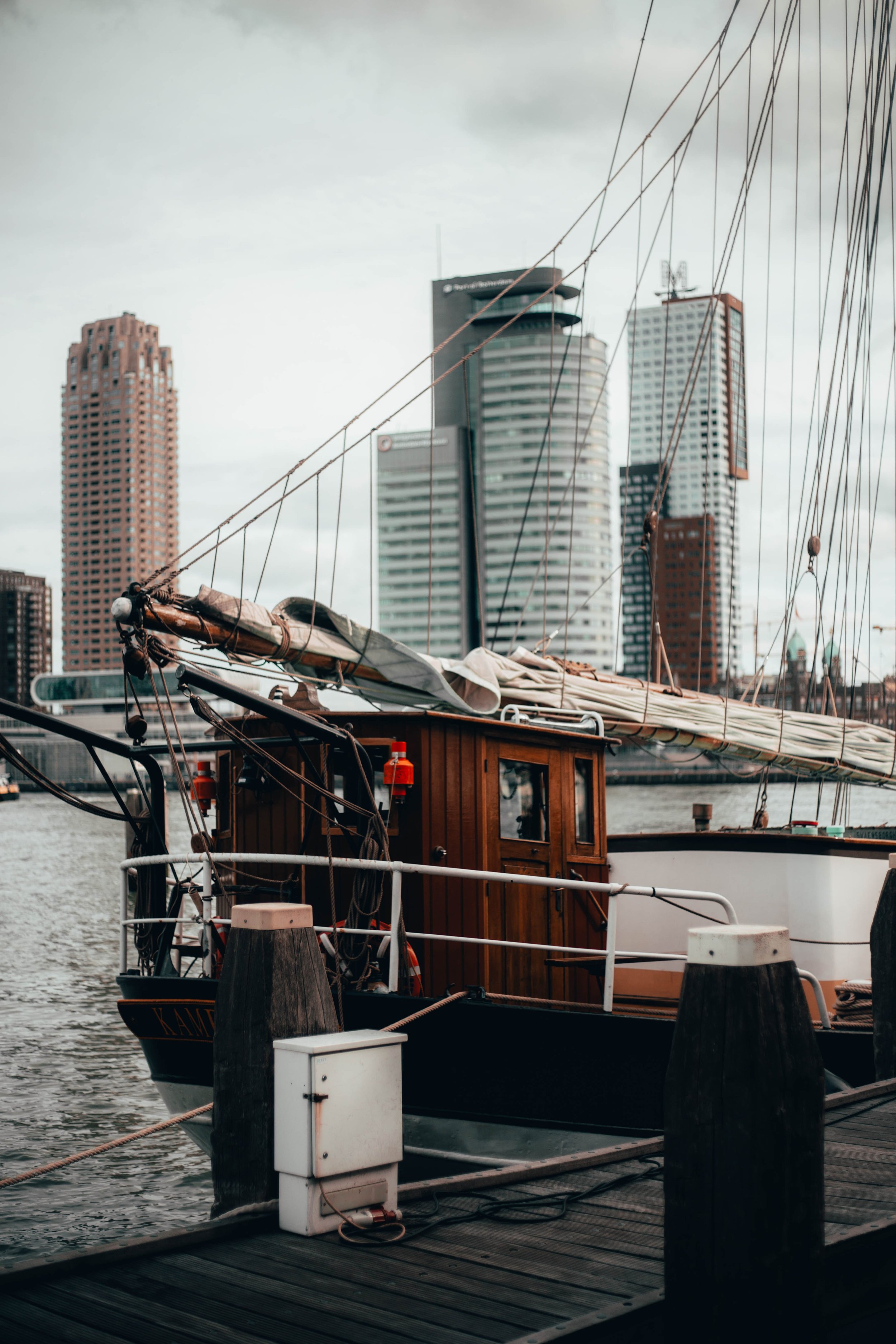Rotterdam Reborn
In the smooth surfaces that have won it awards for beauty and innovation, Rotterdam is a mirror of the energy and concerted effort of those who built it; the diligent daily work it takes to tackle the task of building something better, newer, smarter on the back of everything before.
Image by Nick Vernij (left) and Davey Heuser, via Unsplash.
Rotterdam is a city razed from ground zero. Almost anyone you encounter who tells you its story will begin with its complete obliteration during the Second World War, and locals seem to take great pride in the metropolis of glass and graphite that rose from the ashes of its predecessor, apparently home to typical Dutch historic architecture resembling that of its rival city, Amsterdam.
What’s left of that older city, immortalised in photographs but unrecognisable in the streets of Rotterdam today, are odd fragments of an earlier time sandwiched between contemporary structures, forgotten heirlooms tucked away amidst blocks and blocks of newness. Its youthful population boast a sense of haughty regard for their city, the local affinity held by many a European town mixed with a sense of cool knowledge that they reside in what is hands-down Holland’s most cutting-edge urban centre.
Images by Mike van den Bos (left) and Richard Ciraulo (right) via Unsplash.
During my brief visit – a weekend on the water in the November mist, harvesting a story about sailors and ship restoration, watercraft and handicraft, for an upcoming documentary – I had a hunch that the city’s invisible past has silently shaped the attitudes and architecture of the present, unbeknownst to the naked eye. In the negative space between buildings protruding at impossible angles, the slight shadow of what was once before cannot be erased.
Instead I think it takes the form of a kind of hubris. The guarded sense of purpose, identity and self-importance that grows from trauma, like a scab over a wound. The meaning we construct when we are left without a sense of control amidst the terrible, unthinkable things that sometimes happen to us, and the story we tell ourselves in which we chose, not were forced, to rebuild anew.
I quickly came to commend the city for wearing on its sleeve a heart fashioned together from the smoking debris of what it once was into a smooth and experimental new shape. I came to understand that it’s both a privilege to be surrounded by centuries’ worth of relatively uninterrupted built heritage, and a false pretence of which I’m guilty to assume that without that sense of visible history, a city is somehow less textured. It isn’t true.
Images by Stijn (left) and Isaac Mehegan (right)
Although its glass facades appear shiny and smooth, Rotterdam is engrained with grit. It’s a working city, built on the backs of the makers and labourers who have powered its shipbuilding and shipping industries from centuries ago until today – if you stand just outside of the Maritime Museum and looked out at the wharf, you’ll see it plain as day. The sights and sounds of steady workflow, movement, the tinkling of someone tinkering with one of the historic ships that floats in the harbour and the louder echoes of larger-scale construction projects being undertaken by the docks. Amidst this ever-present activity of building and rebuilding, the profile of a strikingly modern city that reimagined itself after an earth-shattering, ground-flattening moment in history becomes ultimately more layered.
In the smooth surfaces that have won it awards for beauty and innovation, Rotterdam is a mirror of the energy and concerted effort of those who built it; the diligent daily work it takes to tackle the task of building something better, newer, smarter on the back of everything before.





